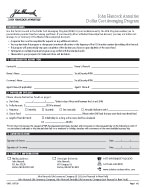Can you name a beneficiary on a bank account? What does beneficiary name mean? How to add a beneficiary for a bank account?

Instead of sharing the account with another account holder, setting up a this kind of designation is a form of estate planning that allows an account holder to leave a bank account's contents to a loved one or organization upon their death. A beneficiary designation , however, is different. Such an account could also be in the name of a Corporate, a partnership firm, a society and a trust.
Moreover, choosing a beneficiary is required to open some bank accounts. The designated beneficiary , however, can be changed by the account holder at any time. Beneficiaries extend beyond the people you mention and leave property to in your will. Insurance policies and retirement plans have designated beneficiaries and the proceeds go directly to these individuals without the necessity of probate when you die.
The same holds true for bank accounts in some states. Some states have community- or marital-property laws, which mean that your property passes to your spouse upon your death. Along the way, we have opened multiple bank , investment, and retirement accounts that have asked us to name beneficiaries directly for each account. Because these direct beneficiary designations supersede a Will, they need to be carefully reviewed and coordinated with an estate plan.
Now, click on Add Beneficiary. Next, you need to fill beneficiary details, account details, bank details. Enter beneficiary name , nickname (of your choice), set maximum limit.

The POD is also known as a transfer-on-death, or TO account, also called a Totten trust. Your bank or credit union will add the beneficiary to your account free of charge. How Confirmation of Payee will work.
When setting up a new payment, or amending an existing one, banks will be able to check the name on the account of the person or organisation you are paying. The bank account becomes payable on death, or PO which means the account becomes payable to the recipient upon the death of the account holder. When setting up this type of account, it is important to keep in mind that you may name more than one person. An account holder may choose to list both of their children as equal beneficiaries.
In banking terms, the person sending funds is referred as payee and the person who is receiving the funds is known as beneficiary, but the account number in which we’re transferring amount simply known as the beneficiary account number. You need to have a beneficiary name and account number to transfer funds instantly in any corner of the world. The person who you choose to inherit your account is referred to as the beneficiary.
After your death, the account beneficiary can immediately claim ownership of the account. Before you set up your account, let’s examine the bank account beneficiary rules more closely. Who Can Be an Account Beneficiary?
Whether you name a revocable trust or an individual as the beneficiary on your personal bank account, that beneficiary avoids the probate process. Barclays can attempt a trace or recall on the payment. These include the name of the beneficiary account holder, account number, bank and branch name , and the IFSC code of the beneficiary bank branch. As long as they are alive–a deceased person cannot receive property–you can name them as a beneficiary.
You can name your spouse, children, other friends or loved ones.
No comments:
Post a Comment
Note: only a member of this blog may post a comment.